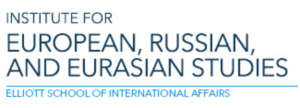In Islamic states or in countries with predominantly Muslim populations, mosques are one of the forms of nation-building. They serve as a means to visually demonstrate the attitude of the nation towards Islam. These majestic buildings are located in the capitals of the Islamic world and compete with one another in beauty and size. Throughout history, mosques were not only places of worship, but they also served the purpose of promoting political doctrines and the political will of leading elites.
In the modern world, mosques are used to promote the geopolitical interests of leading Muslim countries, or in other words, they become an effective means of “soft power” policy. In recent years, countries like Saudi Arabia, Turkey, and Qatar have sponsored around the world the construction of thousands of mosques, as well as religious schools and centers through various charitable foundations. This charitable activity not only aims to create a space for Muslims to pray but also often challenges the basic tenets and principles of the local Islamic thought that has developed in a particular country. Experts have a name for this mosque-related policy – “The Mosque Diplomacy”.
How is “mosque diplomacy” used in Central Asia? What are the goals of the countries that use this diplomacy and what is its geopolitical impact?
After the collapse of the Soviet Union, it was discovered that there was a serious shortage of mosques in Central Asia. Economically weak and young republics did not have the capacity to construct mosques meeting population demands and relied on help from leading Muslim countries to solve the problem. Saudi Arabia and Turkey provided direct assistance in this regard. According to data from 1989, 300 mosques operated throughout the Soviet Union; by 1993, with the help of sponsors, the number of mosques in only Uzbekistan increased to over 6,000.
Despite the fact that since the 2000s the construction of foreign-sponsored mosques was tightly regulated by the state, now the regulation of most of the central mosques in the region has been liberalized to allow the construction with foreign involvement. For countries competing with each other in expanding their spheres of influence in the region, such as Saudi Arabia and Turkey, “mosque diplomacy” is viewed as an additional foreign policy tool.
Saudi Arabia
According to Foreign Policy, the Saudis have spent about $100 billion on Wahhabist propaganda over the past decades. Saudi Arabia wants to remain a patron of global Islam. At the same time, their methods of propaganda and influence are diverse, from the construction of mosques and schools, creation and distribution of textbooks, and training of imams to financing educational centers and cultural institutions. The Saudi charitable foundations have been active in Central Asia since the 90s allocating funds for the construction and repair of hundreds of mosques.
Reports from the Saudi Arabia World Committee for Islamic Salvation reflect the implementation of these active charitable activities in Central Asia and Azerbaijan between the years of 1993 to 1997. During the four years analyzed in the report, the Committee assisted in the construction and restoration of more than 110 mosques in the Central Asian republics. In the long term, the goal is to restore 26 thousand mosques, “closed by red communism and turned into warehouses and museums.”
Saudi Arabia participates in the construction of mosques in Central Asia not directly, but through financial support to various organizations.
First, Saudi Arabia finances various non-government charitable foundations. For example, Saudi Arabia funded the World Assembly of Muslim Youth (WAMY), which as of 2017, built 200 mosques in Kyrgyzstan. The organization, registered in Kyrgyzstan, reportedly financed the construction of about 70 percent of the mosques in the country. In 2012, the Suleiman Too Mosque, recognized at the time as the largest mosque in the country, was built in Osh with financial assistance from WAMY and the United Arab Emirates.

Second, in the 90s, representatives of the Central Asian diaspora living in Saudi Arabia and known there as Bukharians were involved in sponsoring activities. The construction of religious institutions in the region was stimulated with the help of the waqf funds they owned. One of them is the Sheikh Zainuddin Cathedral Mosque in Tashkent, designed for 6,000 worshipers, which was constructed at the expense of charitable funds of Uzbek compatriots from Mecca.

Another area they use is to support local entrepreneurs, establish close ties with them, and then encourage them to organize religious institutions, which usually promote Salafism and Wahhabism. Aurelie Biard explored this in Kazakhstan. According to her, the movements of transnational Salafism collaborate with Kazakh entrepreneurs. Although Kazakhstan maintains various ties with Saudi Arabia, mainly through entrepreneurial channels, the Kazakh offshoots of Salafis rarely receive direct financial assistance from Saudi Arabia. Through Salafism and its sponsorship, the construction of mosques, and the work with entrepreneurs Saudi Arabia (as well as other Arab Gulf states) contributes to the spread of the ideas that are not generally accepted in the country. According to unofficial data, there are about 19,000 Salafis in Kazakhstan.
According to international observers, achieving the desired results in Central Asia by Saudi Arabia’s “mosque diplomacy” is difficult. The governments of Central Asia are secular. According to O. Roy’s interpretation, Islam forms the society in the region, but does not influence politics. Governments in the region are seeking to control the official clergy and their authority in large mosques. The elite is opposed to the spread of various religious views propagated from abroad, in particular, Salafism and Wahhabism by Saudi Arabia. They also are wary of the active participation of religion in political processes. “Mosque diplomacy ” conducted by Saudi Arabia in Central Asia does not have as many opportunities as it would assume, and while it would seem that its rival, Turkey, prevails here, it too faces some obstacles.
Turkey
As one of the regional leaders, Turkey is building a large number of mosques around the world, including dozens of mosques in Africa, Europe, and America. In particular, a mosque built with the help of Turkey in the United States in 2016 is recognized as the largest Islamic center in the Northern Hemisphere.
Hundreds of charitable foundations in Turkey sponsor the construction of mosques in Europe and Africa, as well as in Central Asia. Turkey’s charitable activities related to the construction of mosques are more often observed in Kyrgyzstan than elsewhere in Central Asia. Turkey, through its powerful Directorate for Religious Affairs, Diyanet, is actively involved in the funding of organizations focusing on religious education and the construction of schools, mosques, and madrassas throughout Kyrgyzstan. One of the largest mosques in Central Asia was opened in Bishkek on September 2, 2018, by the former Kyrgyz President Sooronbai Jeenbekov and the President of Turkey Recep Tayyip Erdogan. The mosque, designed in the tradition of Ottoman architecture, was built with the help of Turkey.

According to the experts of the Al-Jazeera Research Center, if we consider that there is a competition in the Central Asian region for the implementation of ” mosque diplomacy”, then Turkey’s opportunities are wider here. This is because the option proposed by Turkey for the mosques and religious institutions is preferable in comparison to the Wahhabi teachings of Saudi Arabia, and it is more historically closer with the leadership of the region. In contrast to the conservative Hanbali madhhab school, which forms the basis of Wahhabism, the Hanafi madhhab school widespread in Central Asia and Turkey is relatively liberal and gives greater freedom in the interpretation of religious laws.
However, one should not forget another factor hindering Turkey’s “mosque diplomacy” and its policies. In recent years, nationalism has been rising in Turkey. The country sometimes advances the vision to unite all the Turkic peoples of the world but this policy does not suit the Central Asian states, which historically had perceived Pan-turkism as dangerous and threatening its stability and relations with Russia.
Qatar
Established in 1992, the Qatar Charity reports the construction of 7,896 mosques worldwide to date. More than a hundred charitable organizations in the State of Qatar have funded the construction of mosques and madrassas, support for religious education, and support for various religious organizations around the world in recent years, despite the fact that the organizations they fund sometimes represent radical Islamic groups. Qatar, in its foreign policy, pays attention to the propaganda of political Islam and the competition with its regional rivals for influence. Therefore, this country is considered an active participant in ” mosque diplomacy.”
Despite the fact that Qatar is not active in the implementation of foreign policy in Central Asia, its “mosque diplomacy” in the region has led to tangible results. The State of Qatar has sponsored the construction of several large mosques in the region. In particular, they allocated 70 million US dollars for the construction of the Dushanbe Central Mosque in Tajikistan, which is said to be the largest mosque in the CIS. This mosque, the total cost of which is $100 million, can simultaneously serve 115 thousand prayers.

The government of Qatar also funded the construction of The Nur Astana Islamic Cultural Center. The center consists of The Nur Astana Mosque, designed for five thousand believers, the Islamic Research Center, and a religious educational institution. In recent years, the Qatari government has sponsored the construction of more than 30 mosques and religious educational institutions in Kyrgyzstan.
Qatar’s sponsorship of mosques and other religious institutions differs from the policies of Turkey and Saudi Arabia. As mentioned above, Qatar is not an active participant in the geopolitical processes in the region; it does not have large capital invested in regional markets. For example, it allocated 70 million US dollars for the construction of a mosque in Dushanbe in 2009, although, according to the Ministry of Foreign Affairs of Tajikistan, in 2014 the mutual trade turnover between the two did not even reach 60 thousand US dollars. Qatar is not the main trade partner for Tajikistan; at the same time, Tajikistan does not represent important strategic importance for Qatar.
With Kazakhstan, the circumstances are different; businessmen in Qatar are interested in participating in energy and other economic projects in Kazakhstan, so they take part in various charitable events and financing projects.

With Kyrgyzstan, the situation is even more serious. Today the government of the republic is establishing close ties and relations with all Arab states of the Persian Gulf, including Qatar. According to an analyst from Kyrgyzstan E.G. Garbuzarova, “the generous funds that Qatar and Saudi Arabia are investing in Kyrgyzstan are worrying. Since it is well known that in recent years both states have supported radical Islamist groups to achieve their geopolitical goals. These countries are funding the construction of mosques in southern Kyrgyzstan”.
The concern is the fact that the State of Qatar, after the events of the “Arab Spring” in the Middle East, was accused of cooperation with radical Islamist groups. Particularly, there are talks about its links with international terrorist organizations, such as the Muslim Brotherhood, Al-Qaeda, and the Islamic State.
United Arab Emirates
The United Arab Emirates tops the list of the Muslim states that invest in the economy of the region, but they do not take an active part in the construction of mosques and other religious institutions. At the same time, UAE does participate in ” mosque diplomacy” in Central Asia. For example, the Emirati Fund Zayed bin Sultan Al Nahyan allocated funds for the construction of the Shymkent Cathedral Mosque, which is considered the largest in the territory of South Kazakhstan. Along with this, this fund has established active cooperation with the Waqf Foundation in Uzbekistan. Uzbekistan planned to implement promising projects in various directions with the participation of this leading charitable organization from the UAE.

The UAE wants to have a greater influence on the markets of the region through the implementation of various charity events, as well as allocating funds for the development of science, education, and technology. But they refrain from using funds that may have an impact on the religious situation in Central Asia.
In conclusion, it should be said that “mosque diplomacy” carried out in Central Asia by the leading Muslim states carries both risks and benefits – it is capable of influencing the religious situation in the region but it also creates a new architectural look for the Central Asian capitals, decidedly Muslim.














